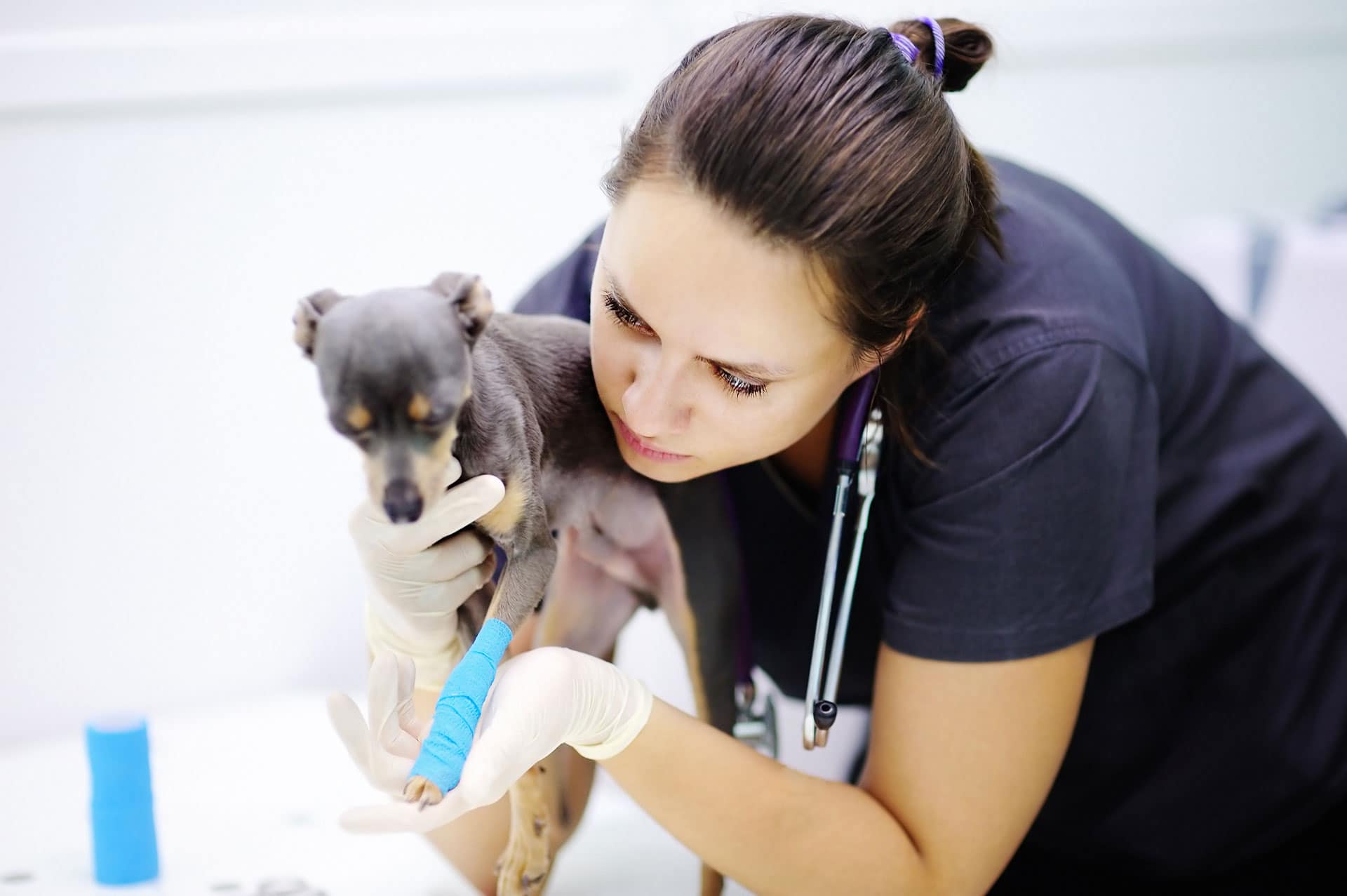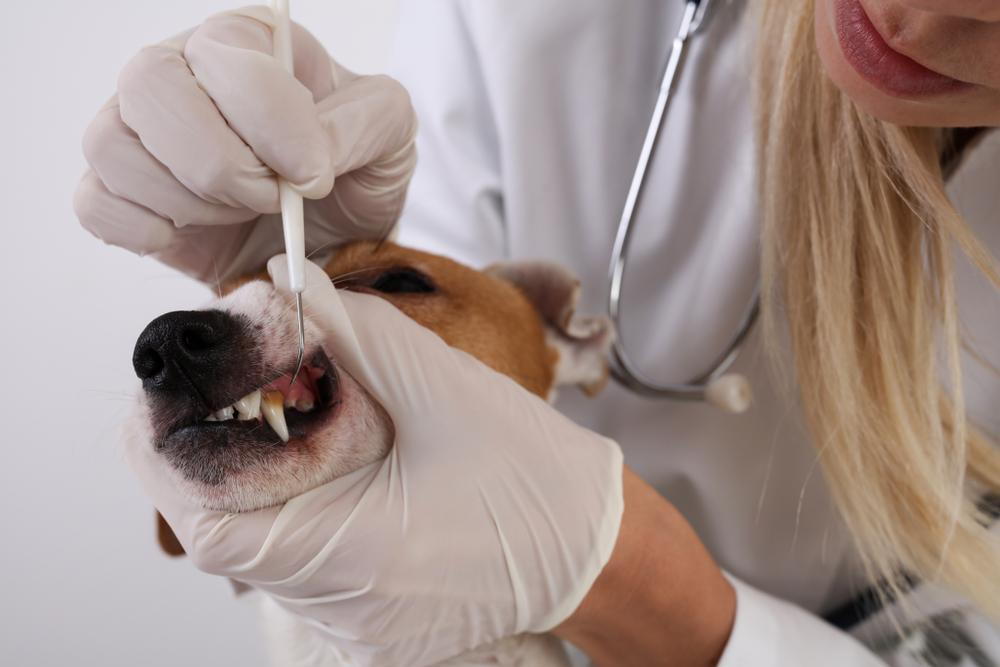Pets
How Did Civet Cat Land In Coorg?

Planning a trip to Karnataka? Then why not take a visit to Coorg, a beautiful, hilly rural district in Karnataka? And needless to say, you’ll put an end to your long-standing doubt: what link this rural district and Civet cats have.
What does Coorg have to do with Civet cats?
India, the third-largest producer and exporter of coffee in Asia, has started producing the most expensive coffee on a small scale. The civet cats’ waste is used to make this coffee, and you can visit using a car rental in Bangalore.
In Coorg, you can find civet cats, a nocturnal species that resembles a raccoon and is in danger of going extinct in the Western Ghats. They often reside on coffee plantations and in tropical jungles. These small animals are known for their faeces, more than worth the bother, despite the fact that they frequently annoy villagers by ascending buildings at night and making excessive noise.
Civet coffee is the priciest coffee in the world for obvious reasons, but if you are a true coffee connoisseur, you won’t hesitate to pay Rs 20,000–25,000/kg! You would have assumed that this coffee is not your typical cup of joe, given its absurd price. It is notable for its incredibly peculiar production process instead. It is a civet’s cat waste. Only three to four countries, including India, produce this special coffee. But what’s the story behind this priced coffee?
History of civet coffee
When Thamoo Poovaiah was a child, he frequently saw civet cat droppings around their coffee estates in Coorg, southwest Karnataka. But it took him years before he realised he was sitting on a jackpot because of the growing demand for civet coffee on the international market. Currently, Coorg Consolidated Commodities (CCC), where Poovaiah serves as a managing partner, is the source of the most expensive coffee in the world.
But what he shared with us was a sobering eye-opener. Mr. N. G. Thimmaiah procured 10 kg of Kopi Luwak in 2015 and shipped it to Switzerland for a respectable sum. Unfortunately, his production of Kopi Luwak coffee fell by 50% in both 2016 and 2017 to just 5 kg.
Mr. Thimmaiah eventually learned that the Civet Cats were being killed by the farmers who lived next to his property because they were stealing their coffee beans. They kill the cats because, as Mr. Thimmaiah explains, “to them it is very easy, the cats eat their coffee.”
Mr. Thimmaiah attempted to persuade his fellow farmers to stop killing the civet cats by explaining to them the value of the coffee, but these farmers already thought Mr. Thimmaiah was crazy because he only grows his coffee organically using natural compost and no fertiliser. As a result, when he told them that the poop these Civet Cats produced was extremely precious, they laughed him out of the room.
Because they consume fruit and so spread seeds throughout tropical forests, civet cats help to preserve the health of forest ecosystems. Civet cats have occasionally been invasive and regarded as pests, like in Indonesia. That is not the case in the Coorg region, where they contribute to the preservation of the ecosystem.
Conclusion
Out of all the Kodagu specialities offered here, including different coffees and cocoa goods, aside from the quiches and pies that the café sources from home chefs, the civet coffee is unquestionably the star attraction. And unlike the original civet coffee from nations like Indonesia, where the animals are caged to ensure a steady supply of “raw material,” there are no horrifying backstories here, and you can visit Bangalore to Coorg cabs.
Pets
The Legal Landscape: Navigating Pet-Related Rental Laws in the UK

In the United Kingdom, where a profound affection for animal companions is woven into the cultural fabric, navigating the intricate legal terrain of pet-friendly rental laws, commonly referred to as the ‘law on renting with pets,’ stands as a pivotal undertaking for many seeking accommodation. Renting with pets has evolved into a commonplace scenario, compelling both lessees and lessors to acquaint themselves with the elaborate network of regulations governing these arrangements. This discourse aims to illuminate the rights and obligations associated with pet-friendly rentals in the UK, delving into pivotal facets that demand consideration from both tenants and landlords.
The Lessee’s Perspective: Pet-Permitted Tenancy Entitlements
1.1 Lessees’ Entitlement to Animal Companionship
For individuals who hold a deep fondness for the camaraderie of furry companions, apprehending their entitlements assumes paramount significance. The default stance in the UK dictates that lessees possess the liberty to maintain pets unless the tenancy agreement explicitly dictates otherwise. Nevertheless, lessors wield the authority to insert clauses that limit or prohibit pet ownership, underscoring the need for tenants to meticulously scrutinize the terms before affixing their signature to any agreement.
1.2 Unjust Pet Limitations
It is imperative to acknowledge that not all stipulations related to pets hold enforceable sway. The Consumer Rights Act of 2015 shields lessees from inequitable terms within tenancy agreements and unduly restrictive clauses about pets may be deemed unjust. This implies that an across-the-board prohibition on all pets, devoid of consideration for the type, size, or demeanour of the creature, could potentially be contested in a legal forum.
1.3 Rational Pet Security Deposits
Lessees with pets may be subject to a heightened deposit requirement, considering potential damage or augmented cleaning expenditures. However, such demands must be reasonable. The Tenant Fees Act of 2019 places a cap on the security deposit at five weeks’ rent, and any endeavour to surpass this threshold solely due to the presence of pets may be adjudicated as unlawful.
The Lessor’s Outlook: Harmonizing Pet-Friendly Leases with Property Conservation
2.1 Pet-Accommodating Property Administration
Lessors, while aspiring to attract a broader spectrum of lessees, may harbour concerns about the impact of pets on their properties. To address this, some lessors adopt property management practices that accommodate pets, incorporating pet-friendly flooring, incorporating specific pet-related clauses, and conducting periodic property inspections to monitor potential damage.
2.2 Tailored Pet Stipulations
Lessors retain the prerogative to embed pet-related stipulations within tenancy agreements, explicitly outlining the types, sizes, and quantities of pets permissible. By customizing these clauses, lessors can strike a delicate equilibrium between catering to pet owners and safeguarding their properties. Lessors must communicate unambiguously with lessees regarding expectations concerning pet care and property upkeep.
2.3 Insurance Deliberations
Lessors may also contemplate adjusting their insurance policies to factor in potential risks associated with pets. Certain insurance providers extend coverage for damages caused by pets, furnishing lessors with an additional layer of protection. However, lessors must engage in detailed discussions with their insurers to ensure comprehensive coverage.
The Legal Framework: Expulsions and Contentions
3.1 Pet-Linked Expulsions
In instances where lessees breach pet-related clauses or inflict substantial damage, lessors may contemplate eviction. However, adhering to proper legal procedures, including furnishing written notices and pursuing possession orders from the court, is imperative. The rationale for eviction must be articulately stated, and lessors should be prepared to substantiate their decision based on factual circumstances.
3.2 Dispute Resolution and Conciliation
In the event of disputes, conciliation can serve as a valuable instrument for resolving conflicts between lessors and lessees. Mediation services, such as those offered by the Residential Landlords Association (RLA) and the National Landlords Association (NLA), can aid in finding common ground, circumventing the time and expense associated with legal proceedings.
Reflections on Pet-Embracing Leases
Traversing the legal expanse of pet-friendly rental laws in the UK demands a nuanced comprehension of the entitlements and obligations intrinsic to both lessees and lessors. Striking a judicious balance that accommodates the pleasures of pet ownership while fortifying property interests remains imperative. Through meticulous examination of tenancy agreements, adoption of pet-accommodating property management practices, and awareness of legal entitlements, both lessees and lessors can ensure a harmonious cohabitation for all involved parties. In the realm of pet-friendly rentals, an erudite approach is the linchpin to wagging tails and contented lessors.
Healthy Pets
Comparing Medical Insurance Plans: Key Factors to Consider Before Choosing a Policy

In today’s unpredictable times, medical insurance plans have become a necessity more than a luxury. You or your family member might fall sick, get sick, or require immediate hospitalisation that can cause an emotional breakdown. But those pilling bills can add to the stress and lead you to struggle financially as well.
But today you don’t have to worry about the hospital bills burning a hole in your pocket. With numerous medical insurance plan options available nowadays, your life has become easier.
So, how to decide which plan is best suited for your family? it’s a smart move to compare some important factors before making a final decision.
Factors to Keep in Mind
● Things it Covers
One of the most important things to keep in mind when selecting a medical insurance plan is the level of coverage it offers. Different companies may provide varying levels of coverage for the same insured sum. It’s crucial to opt for a comprehensive plan that includes additional benefits such as coverage for outpatient department (OPD) expenses, critical illnesses, pre-existing conditions, and ambulance services.
● Good Renewable Age
Choosing a health insurance plan that offers lifetime renewability or a higher renewal age is advisable as one may face various complex health issues during their old age. Opting for a plan with lifelong renewability is even more advantageous as it ensures continuous health coverage throughout one’s lifetime.
● Hospitals
When comparing various medical insurance plans, it’s essential to review the list of hospitals covered under the insurance provider’s cashless network and check if your preferred hospital is included. This will come in handy during emergencies, as it allows for cashless transactions. Additionally, it’s important to determine whether the insurance provider has tie-ups with a large network of hospitals.
● Waiting Time
It’s important to note that certain medical conditions such as cataracts, pregnancy, or preexisting conditions may not be covered immediately after purchasing a health insurance plan, and a waiting period ranging from 1 to 4 years may be required. Therefore, it’s crucial to check the waiting period for such conditions while comparing different health insurance plans.
● Expenses for Pre and Post Hospitalisation
Certain medical treatments may involve expenses before and after hospitalisation, such as diagnostic tests, biopsies, and follow-up visits to the doctor. It’s important to ensure that your health insurance policy covers all of these expenses to avoid any financial burden. Therefore, it’s advisable to check for coverage of such expenses when comparing different health insurance policies.
● About the Premium
The primary goal of comparing and knowing which medical insurance is best is to obtain the maximum coverage that you need while paying a premium that you can afford. However, it’s crucial not to select a policy with a high premium that may become difficult to maintain in the future. Therefore, when comparing different health insurance plans, it’s important to consider the affordability of the premium to avoid any financial strain in the long run.
● About Super Top-up Plans
Choosing a super top-up plan in addition to your regular health insurance policy is a smart move. This ensures that if your hospitalisation expenses exceed a certain limit, your insurance provider will cover the remaining amount. Additionally, top-up plans generally have lower premiums, making them a viable option for individuals who cannot afford high premiums. Therefore, opting for a super top-up plan can provide added financial security and peace of mind.
● About Sub-limit
Sublimits are applicable to certain medical expenses, such as doctor visits, room and bed charges, etc., and are covered by the insurer based on the policyholder’s sublimit. If these charges exceed the sublimit, the policyholder must pay the difference amount. That’s why many policyholders prefer policies without sublimits, and even if one chooses a policy with a sublimit, it’s wise to opt for a higher limit. This ensures that there’s sufficient coverage for all medical expenses and reduces the possibility of incurring additional out-of-pocket expenses.
● Customer Reviews
It’s important to check the reviews and ratings of different insurance providers on social media platforms. This can provide valuable insight into the user experiences related to their products, including:
- The time taken to settle claims
- How quickly they respond to customer queries
By checking these reviews and ratings, you can make an informed decision about which insurance provider to choose, ensuring that you receive the best possible service and support.
Types of Insurance Plans
There are several types of health insurance plans available, such as family floater, personal, and senior citizen plans. However, your main objective is to obtain the maximum benefit from your insurance policy. To achieve this, it’s recommended to compare similar types of plans offered by different health insurance companies providers. This allows you to evaluate the features and benefits of each plan and select the one that best meets your needs and budget.
Conclusion
Buying an insurance policy is a huge decision for you and your family as it would impact the way your medical bills would be covered in case of an emergency. Make sure that you keep the factors discussed above in mind and make an informed decision. If you want to learn more about the different types of health insurance plans and which one would be best suited for your family, you can consult the experts at Niva Bupa.
Pets
When to Seek Veterinary Care for Vomiting in Cats

Vomiting is an exanthematous incident frequently experienced by felines, with countless root causes and intensities. Although certain scenarios of regurgitation may not be considered concerning, some circumstances necessitate immediate veterinary attention. This article will discuss when to seek veterinary care for vomiting in cats and the potential consequences of delaying treatment.
What Is Vomiting?
Vomiting is the ejection of semi-processed nourishment and other stomach and small intestine materials. Various conditions can bring it about, including dietary imprudence, foreign body ingestion, gastroenteritis, and other medical issues. It is significant to remember that vomiting is not equivalent to disgorgement, which is the ejection of unabsorbed sustenance or liquid that has not yet gone into the stomach.
Signs of Vomiting in Cats
Cats typically display a few signs that indicate they are vomiting. These signs can include heaving, retching, and abdominal contractions. Additionally, cats may produce drooling, lip-licking, and excessive swallowing before vomiting. After vomiting, cats may appear passive, have decreased appetite, and may have a poor coat condition.
When to Seek Veterinary Care for Vomiting in Cats
It is essential to bring your feline to the vet if they are disgorging more than twice in a day and a half or if they have other alarming signs, for example, listlessness, fever, not eating, or stomach torment. Besides, any regurgitation that continues for over a day and a half should be assessed by a vet. On the off chance that your cat is hurling and has any of the accompanying manifestations, it is pivotal to observe a veterinarian promptly.
Bloody Vomit: Vomiting that comprises blood is denominated hematemesis and may be engendered by a gamut of medicinal circumstances. If they are disgorging blood, it is critical to bring your feline to the veterinarian expeditiously.
Vomiting with Dehydration: Dehydration can be difficult for felines and may transpire when they cannot supplant forfeited liquids. Manifestations of desiccation comprise a parched maw, hollowed eyes, languor, and hide that does not rebound when squeezed. If your cat is exhibiting any of these indications, it is imperative to take them to the vet instantly. Treatment may incorporate furnishing fluids, electrolytes, and other medicaments to assist in reviving suitable hydration levels in the body.
Vomiting with Weight Loss: If your feline is regurgitating and slimming, escorting them to the vet is crucial to discern the originative cause. Weight diminution can result from various health predicaments, such as malignancy and incessant renal ailment.
Vomiting with Diarrhea: If your feline is disgorging and has the runs, it is imperative to get veterinary assistance promptly, as this can be a marker of a genuine medicinal condition, for example, pancreatitis or intestinal blockage.
Vomiting with Other Neurologic Symptoms: If your cat is vomiting and has other neurologic symptoms such as seizures or head tilt, it is important to seek veterinary care immediately as this can be a sign of a serious medical condition such as feline infectious peritonitis or a brain tumor.
Potential Consequences of Delaying Treatment
Delaying veterinary care for vomiting in cats can have serious consequences. Vomiting can lead to dehydration, electrolyte imbalances, acid-base disturbances, and nutritional deficiencies. Additionally, some underlying causes of vomiting can be life-threatening if left untreated. For example, untreated pancreatitis can lead to severe abdominal pain, organ failure, and death.
Conclusion
Vomiting is a frequent episode in felines and can be caused by many circumstances. Even though certain instances of disgorging may not be a source of alarm, it is essential to get veterinary attention if your cat is heaving more than twice in twenty-four hours or has other worrisome signs such as listlessness or fever, lack of appetite, and abdominal distress. Moreover, any disgorging that persists beyond twenty-four hours should be inspected by a vet. Postponing veterinary care for vomiting in cats can have dire consequences, resulting in desiccation, electrolyte imbalances, acid-base imbalances, dietary inadequacies, and even mortality if left unattended.
If your cat is vomiting, it is important to take them to the veterinarian as soon as possible to determine the underlying cause and provide the necessary treatment.
-

 Travel1 week ago
Travel1 week agoeSIM Revolution: Staying Connected Across Middle East and Asia Without Breaking the Bank
-

 Health1 week ago
Health1 week agoTeaching Kids Good Oral Hygiene With Family Dental Support
-

 Health1 week ago
Health1 week agoInnovations In Pain Management Protocols At Small Animal Veterinary Hospitals
-

 Health1 week ago
Health1 week agoHow General Veterinarians Provide Peace Of Mind For Families
-

 Health6 days ago
Health6 days agoHow CPAs Offer Strategic Guidance To Executives
-

 Tech5 days ago
Tech5 days agoComplete Guide to Understanding What are Heat Pipes
-

 Health1 week ago
Health1 week agoWhy Dental Cleanings Are Essential At Animal Clinics
-

 Health1 week ago
Health1 week agoHow Pet Dental Care Prevents Systemic Illness



